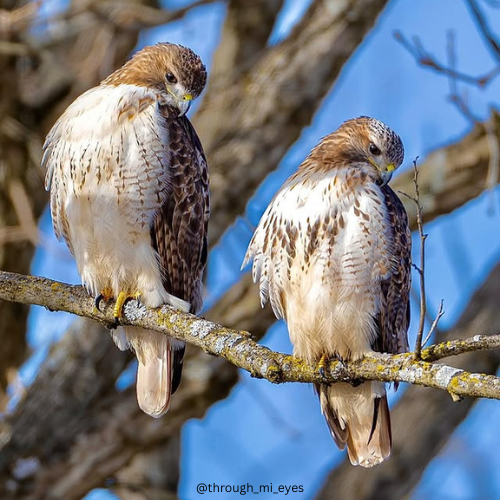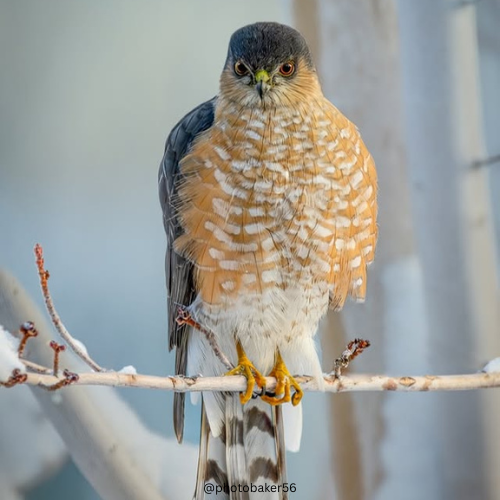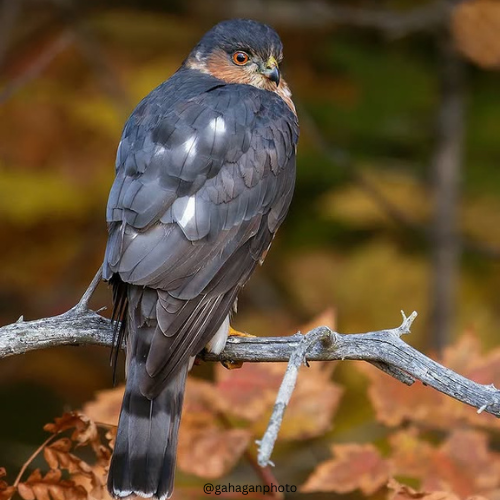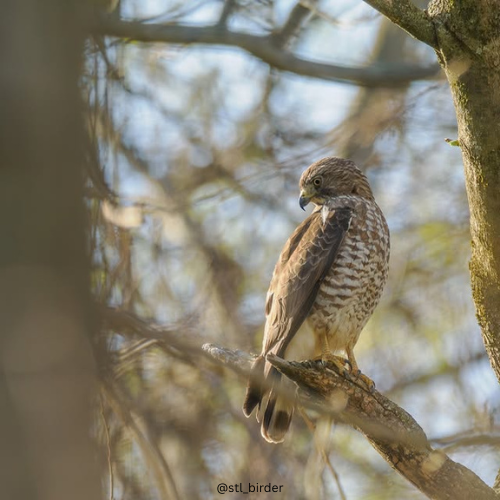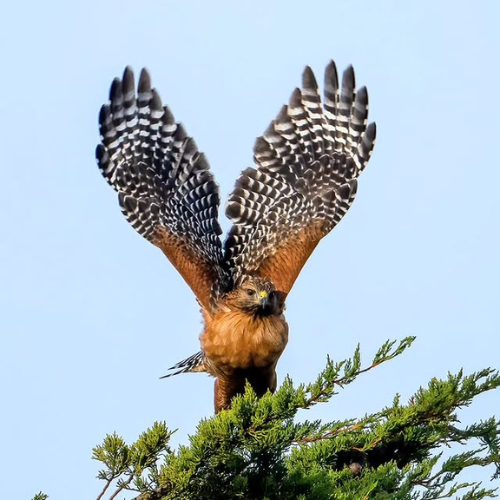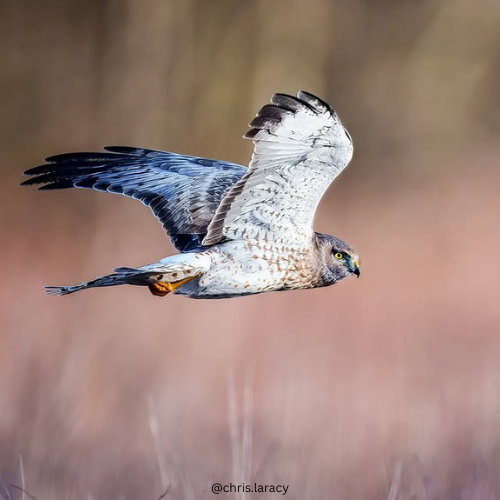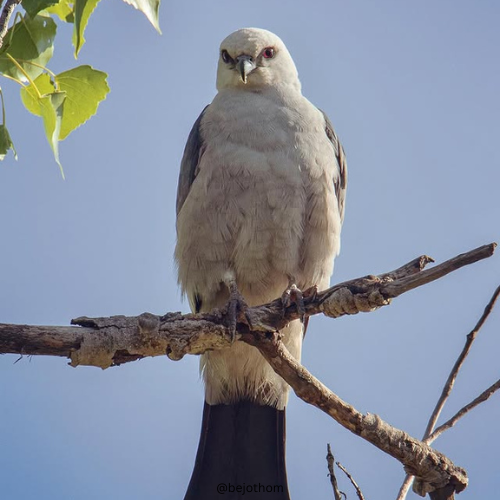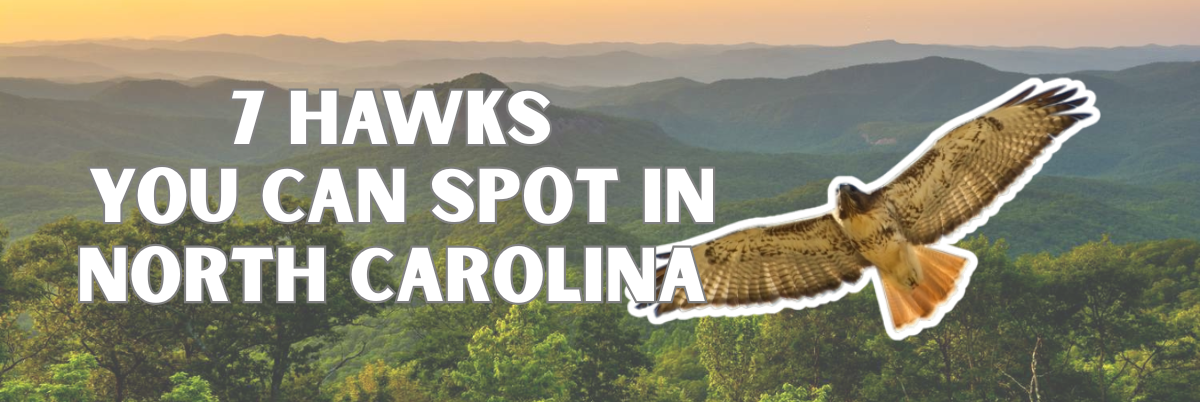
By Avian Feathers Team
Published July 2025
This is the most common hawk in North Carolina. It’s easy to recognize by its large size and reddish tail. You’ll often see it perched on poles or soaring over highways. Red-tailed Hawks are powerful hunters and feed on small mammals like mice, rabbits, and squirrels.
1. Red-tailed Hawk
One of the most widespread hawks in Washington. You’ll often see them soaring over highways or perched on telephone poles. Their rusty red tails are a dead giveaway. Listen for their raspy screech, often used in movies to represent all raptors.
Size
Length: 18–26 in (45–66 cm)
Wingspan: 43–56 in (110–142 cm)
Weight: 1.5–3.5 lbs (680–1600 g)
Scientific Name: Buteo jamaicensis
2. Cooper’s Hawk
Cooper’s Hawks are fast and agile. They’re known for chasing birds through trees with amazing speed. These hawks are common in wooded areas and sometimes visit backyards to hunt birds at feeders.
Size
Length: 14–20 in (35–50 cm)
Wingspan: 24–35 in (62–90 cm)
Weight: 0.5–1.5 lbs (220–680 g)
Scientific Name: Accipiter cooperii
3. Sharp-shinned Hawk
The Sharp-shinned Hawk is the smallest hawk in North Carolina. It has short wings and a long tail, perfect for flying through forests. It mostly eats small birds and is often seen around feeders, especially in winter.
Size
Length: 9–13.5 in (23–34 cm)
Wingspan: 16.5–26.5 in (42–68 cm)
Weight: 3–8 oz (85–220 g)
Scientific Name: Accipiter striatus
4. Broad-winged Hawk
These hawks are mostly seen during migration. In fall, they gather in large groups called “kettles” and soar south together. They have short tails and thick bodies and are more often heard than seen in forests.
Size
Length: 13–17 in (34–44 cm)
Wingspan: 29–39 in (74–99 cm)
Weight: 9–20 oz (265–560 g)
Scientific Name: Buteo platypterus
5. Red-shouldered Hawk
These hawks love forests near water. They have reddish chests, black-and-white wings, and a loud, whistling call. You might see one perched in a tree or gliding low over the woods.
Size
Length: 18–20 in (46–51 cm)
Wingspan: 52–54 in (132–138 cm)
Weight: 1.5–3.25 lbs (700–1470 g)
Scientific Name: Buteo lagopus
6. Northern Harrier
Northern Harriers are unique. They fly low over fields with their wings held in a V shape. Males are gray, and females are brown. They also have a white patch above their tail. These hawks use both sight and sound to hunt.
Size
Length: 16–20 in (41–52 cm)
Wingspan: 38–48 in (97–122 cm)
Weight: 10–26 oz (290–740 g)
Scientific Name: Circus hudsonius
7. Mississippi Kite
These sleek gray hawks are often seen in summer, gliding in the sky or hunting insects in midair. Mississippi Kites are graceful fliers and nest in small colonies, usually in the southeastern parts of the state.
Size
Length: 13–15 in (33–38 cm)
Wingspan: 35 in (89 cm)
Weight: 7–13 oz (198–368 g)
Scientific Name: Ictinia mississippiensis
North Carolina’s rich and varied ecosystems serve as a vital habitat for a diverse array of hawks, making the state a rewarding destination for raptor observation. From the widely recognized Red-tailed Hawk to the agile Cooper’s Hawk and the distinctive Broad-winged Hawk of migration season, these seven species showcase the remarkable adaptability and hunting prowess of aerial predators. Whether residents or seasonal visitors, their presence highlights the ecological health of North Carolina’s forests, fields, and coastal areas. With keen eyes and a little patience, bird enthusiasts across the Tar Heel State can frequently enjoy the thrilling sight of these magnificent raptors soaring through the skies.
Where to Spot Hawks in North Carolina
North Carolina’s diverse habitats offer various opportunities to observe these fascinating hawk species:
Red-tailed Hawk: This hawk is common and widespread across all of North Carolina. Look for them soaring over highways, open fields, farmlands, and suburban areas, or perched conspicuously on telephone poles, lampposts, and tall trees.
Cooper’s Hawk: Frequently found in wooded areas, suburban neighborhoods, and parks. They are known to visit backyards where bird feeders attract their prey, often seen darting through trees with agility.
Sharp-shinned Hawk: The smallest hawk, it prefers to hunt in dense forests and shrubby areas. They are often seen around backyard bird feeders during winter, rapidly pursuing small birds.
Broad-winged Hawk: Most commonly observed during spring and especially fall migration (September) when they form large “kettles” as they move south. Look for them soaring high overhead in wooded areas across the state, though they can be hard to spot when not migrating.
Red-shouldered Hawk: Prefers forests, particularly those near water, such as swamps, river bottomlands, and mature deciduous or mixed woodlands. Listen for their loud, distinctive whistling calls, especially in damp, wooded areas.
Northern Harrier: These unique hawks are found in open habitats such as marshes, grasslands, prairies, and agricultural fields. Look for them flying low over the ground with their wings held in a V-shape, especially at dawn or dusk.
Mississippi Kite: Primarily a summer visitor, especially common in the southeastern parts of North Carolina. Look for them gracefully gliding in the sky over open woodlands, agricultural areas, and near river systems, often hunting insects in mid-air.
Keep your eyes on the sky next time you’re outside in North Carolina.
One of these hawks might just glide by. Which one have you seen?

